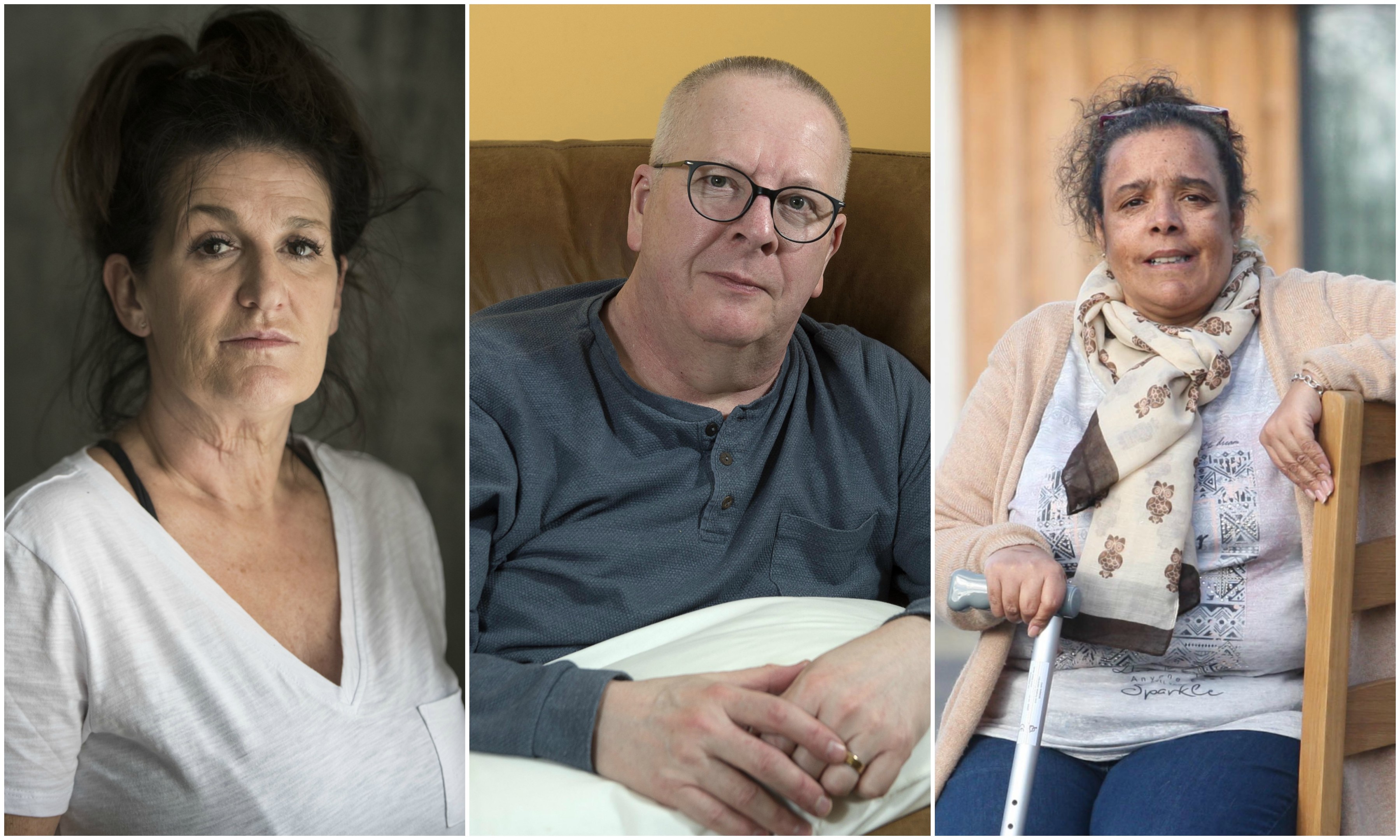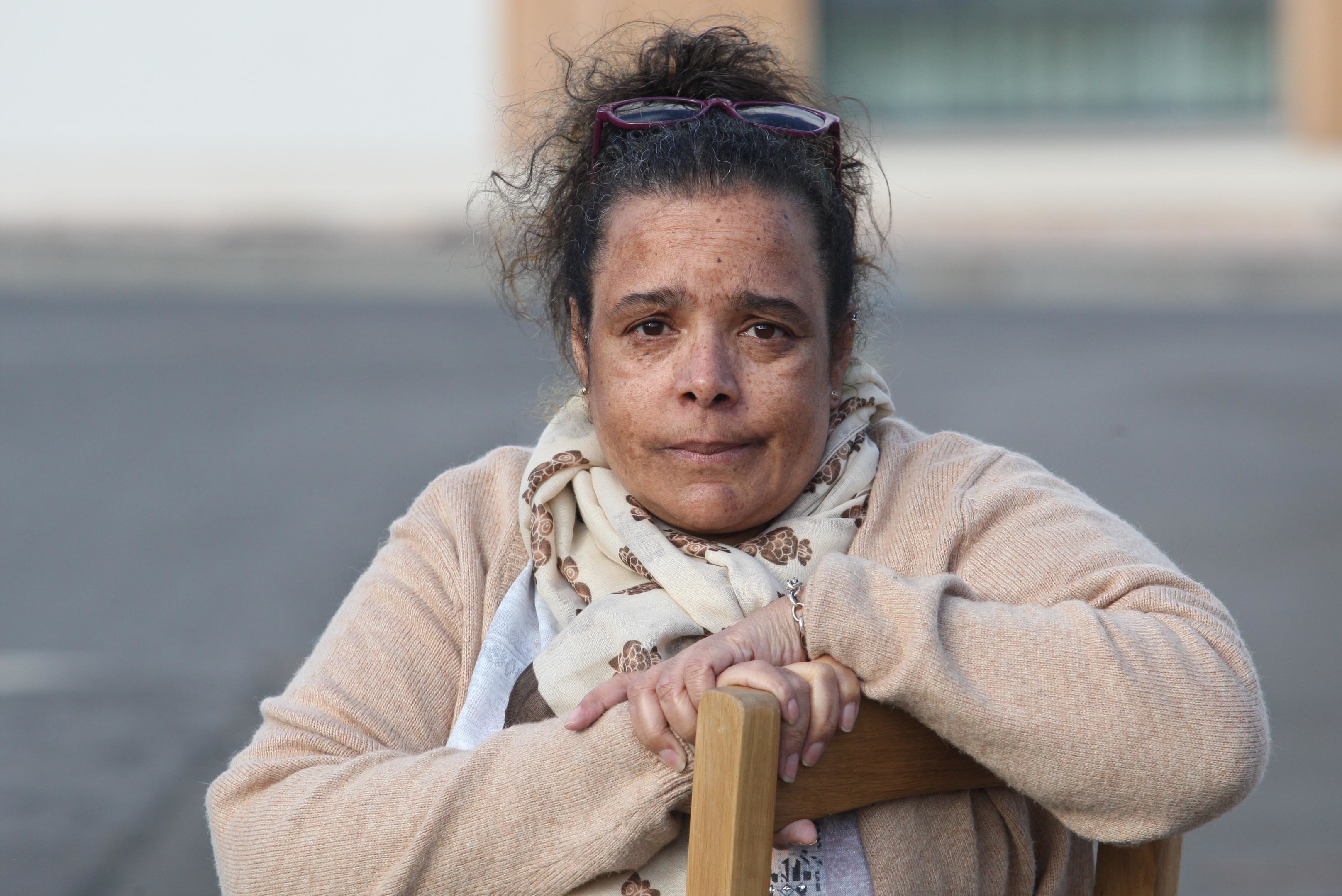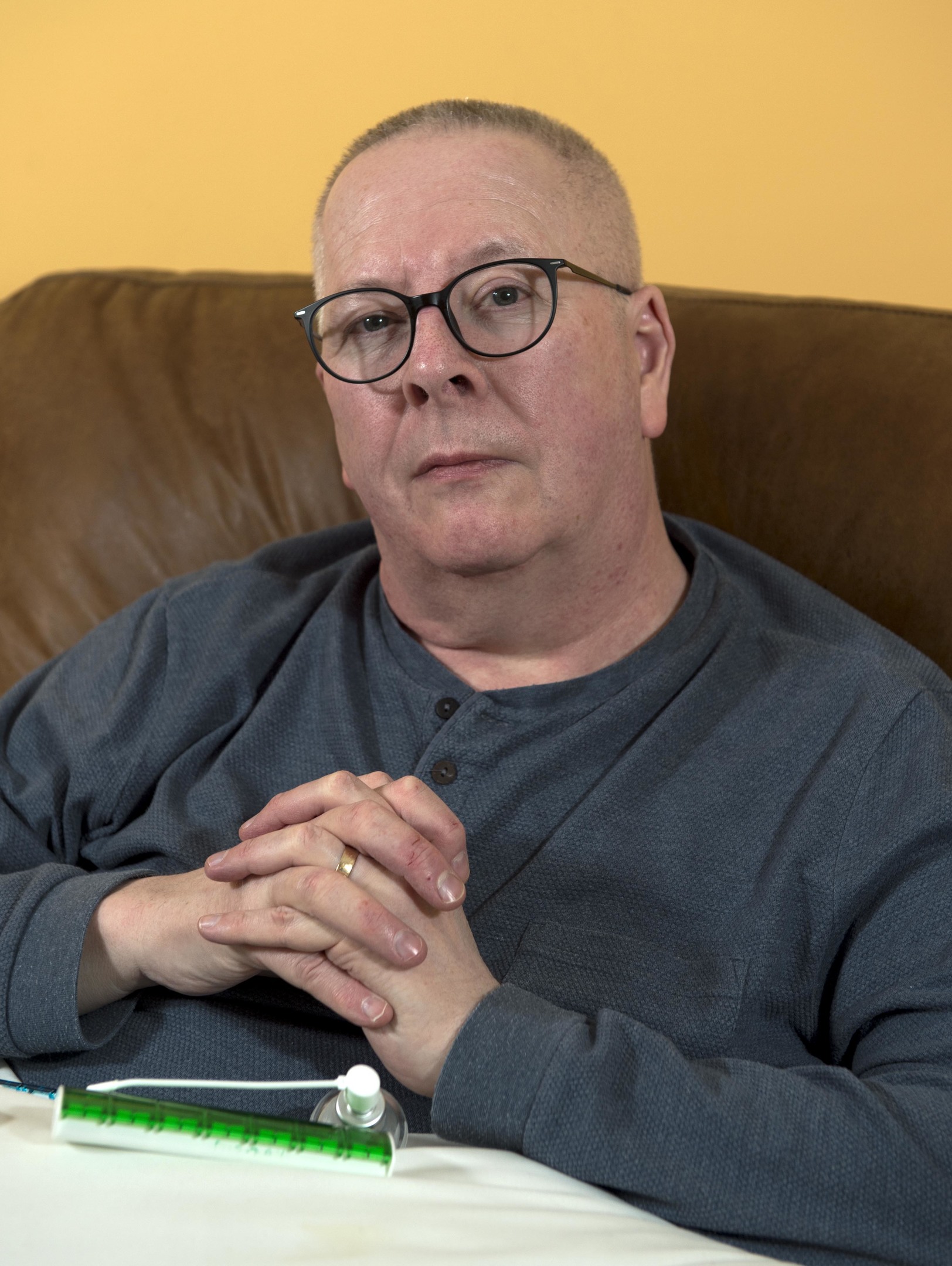
CHRONIC pain sufferers are being driven to suicide because of NHS waiting times of up to two years for treatment.
Patients who suffer debilitating chronic pain conditions are waiting years for repeat appointments for a vital injection to ease their agony, campaigners say.
The government has said everyone suffering from chronic pain should have their first consultant appointment within 18 weeks of diagnosis.
But there is no target for subsequent appointments, meaning, campaigners claim, resources are focused on that first consultation, with patients being left in limbo after that.
Now patients have revealed how, in complete despair at living in severe pain, they have attempted suicide.
Elizabeth Barrie, a former high-flying healthcare executive from East Kilbride who was left waiting up to 22 months for injections for a back injury, said: “I cracked because it was the second time I was facing an 18-22 month wait for prescribed treatment which allows me to live virtually free from heavy painkillers and anti-depressants.
“With no appointment in sight, I decided I’d rather die.”
Elizabeth’s husband realised what she had done and raised the alarm. Now she has joined with campaigners and politicians to call for formal waiting time targets for repeat appointments.
There is no requirement for health boards to supply figures to the NHS Information Services Division, and until there is, campaigners say Scotland’s estimated 800,000 chronic pain victims will continue to be invisible.
Campaigner and former MSP Dorothy-Grace Elder, a member of the Cross Party Chronic Pain Committee, said: “Until the government makes it an official requirement to report return patient waiting times, we won’t get the figures from every health board in Scotland and will never know how many thousands are waiting years for treatment.”
Labour Shadow Health Secretary Anas Sarwar said: “There is supposed to be a legal guarantee for how long a patient waits for treatment, but the government is breaking its own law every single day.
“We know many patients are forced to wait even longer after their first appointment with some waiting 22 months. This is completely unacceptable.
“This can’t go on. The government must get their heads out of the sand and act.”
Scottish Conservative health spokesman Miles Briggs said: “As an MSP and co-chair of the Cross Party Group on Chronic Pain, I’ve heard at first hand, cases of chronic pain patients taking their lives or attempting suicide.
“Chronic pain services are very much the Cinderella service of our NHS and have seen significant cuts.”
He welcomed the review, but added: “The government now needs to step up to the mark in terms of addressing the unacceptable waiting times for treatment.”
Former Health Minister Alex Neil described the situation as “unacceptable”, adding: “Nobody should be thinking of taking their life because they’re stuck on a waiting list.”
A Scottish Government spokesman said: “The Scottish Government has made it clear to Health Boards that long waits are unacceptable and exceptionally long waits must be eradicated as quickly as possible.
“We expect everyone living with chronic pain to be seen as appropriate following clinical assessment and are engaging with Health Boards to understand the reasons behind such delays in pain services.
“We are very concerned to hear reports that anyone living with chronic pain is feeling suicidal and strongly encourage anyone experiencing these feelings or considering self harming to speak to a health professional.”
Elizabeth’s story
Last month, the constant pain caused by a back injury finally became too much for Elizabeth Barrie.
The mother of two, 50, was in such despair that she took more than 40 strong painkillers and lay down to die.
She said: “I didn’t want to face another day of unrelenting agony, knowing that yet again, instead of getting the injections prescribed every six months, I was facing another wait of almost two years in between procedures.”
The prescribed treatment meant the former healthcare executive could live virtually free of strong painkillers.
But if she does not get an injection every six months, she finds herself in excruciating pain.
She said:“Every waking moment was agony.
“The person I once was had long ago been consumed by unrelenting pain.
“You can’t think. You can’t stand.
“You can’t cook a meal for your family. It had taken my career and who I was.
“Knowing a simple 20-minute procedure could stop it and I could get back what is left of my life, but being told you have to wait almost two years between appointments is beyond cruel.
“Finally, I’d had enough. I didn’t want to see my family suffering as they tried to cope with me in pain and distress.”
Luckily, Elizabeth’s husband Gordon, 50, a policeman, found her.
She said: “I hadn’t left a note. You don’t think that clearly when you are in such distress.
“Gordon could see when he looked at me that something was wrong.
“I was able to tell him what I’d done. My terrified
20-year-old daughter had to rush me to Hairmyres Hospital in East Kilbride.”
Elizabeth added: “I was really ill for a week, but the doctors were kind and understood why I’d taken an overdose.
“I firmly believe the Government are deliberately keeping us ‘invisible’, hiding the true waiting figures as there would be a huge outcry if the public found out what state our NHS really is in.” Elizabeth was given a painkilling injection days after her suicide attempt.
She said:“I’ve promised my family that I will save up and go private next time rather than be driven to take my own life again.”
Dr Jane Burns, medical director for acute services in NHS Lanarkshire, said: We would apologise to anyone who has experienced a lengthy wait.”
Venita’s story
Mum-of-three Venita Maclean, 55, from Fochabers, says she has repeatedly been left suicidal after waiting up to 22 months for painkilling injections to her spine.
Venita said: “I had a silly accident just over 10 years ago when I fell against a fridge and the pain has caused all kinds of spinal problems.
“I’m supposed to get at least two spinal injections a year, maybe three if the pain gets too bad.
“But I’ve waited 22 months between the last two injections.
“Other times have been well over a year between treatments.
“Being in agony, knowing it could be a year or maybe almost two before you get the pain relief you need, leaves you suicidal.
“Nobody wants to be a burden on their family. You just feel useless and there is no end in sight when you can’t even get an injection to stop the pain.”
Venita used to get treated at her local hospital in Elgin. But after her specialist left in 2011, Venita has to travel to get treatment in Aberdeen.
She said: “If I get an early morning appointment, my husband John has to take me to Aberdeen and we stay in a hotel as I daren’t miss my place in the queue.
“I’ve spent hours on the phone to see if I can get a cancellation to be seen quicker.”
Grampian Health Board says it has experienced problems recruiting staff for chronic pain treatment.
Christopher’s story
Former bank executive Christopher Bridgeford was almost driven to suicide as he struggled to cope with complex regional pain syndrome (CRPS).
Chris, 58, from Forres, says: “I became suicidal because of the waiting times to see specialists and the despair of not being believed for many years.
“For years, doctors actually challenged me about whether I was really ill.
“How anyone would wish to give up a great career and live with the constant pain and exhaustion I feel is beyond me, but I finally got a correct diagnosis several years ago.
“Life is a daily battle of trying to get the correct pain medication and treatment.”
One of his lowest points came just before his CRPS diagnosis.
Chris said: “All I wanted was a trigger point pain relief injection but I’d been passed around from doctor to doctor for months.
“Only the thought of leaving my wife Rosie stopped me ending it all.”
Christopher runs a chronic pain support group, Affa Sair, and says there are thousands suffering with pain and facing unacceptable waiting times.
He said: “We regularly hear of people having to wait up to 44 months.
“I’ve just received a pain clinic appointment after a year waiting.”
A spokesperson for NHS Grampian said: “We have been experiencing longer waiting times than we’d like with the Chronic Pain Service.
“This is partly as a result of significant challenges in recruiting enough staff.”

Enjoy the convenience of having The Sunday Post delivered as a digital ePaper straight to your smartphone, tablet or computer.
Subscribe for only £5.49 a month and enjoy all the benefits of the printed paper as a digital replica.
Subscribe


